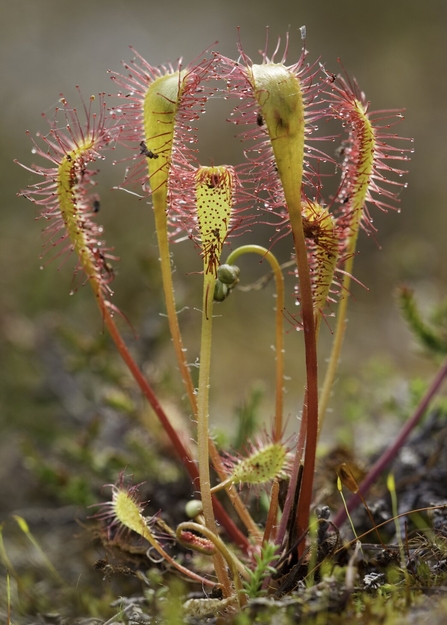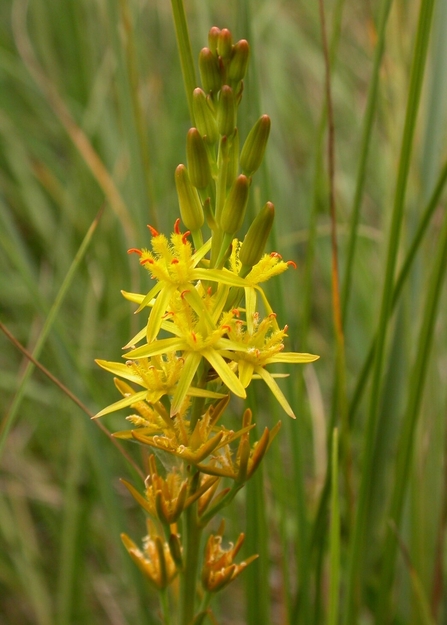Hiding amongst agricultural fields behind a little village in Lancashire lies Winmarleigh Moss SSSI, our region’s best-preserved example of a rare lowland raised peat bog. Wet and squelchy, this is an island oasis for nature surrounded by a sea of drained and reclaimed farmland. Areas of the site are stuffed with heathers, cotton grasses and sphagnum mosses, providing homes for the locally rare large heath butterfly among pantheons of other amazing wildlife.
Winmarleigh Moss SSSI - credit Lancashire Wildlife Trust
But all is not quite as it seems.
Winmarleigh Moss has been subject to historic drainage and management for game bird shooting. This has left the bog dried out and losing water into the surrounding deep agricultural drains. We are working hard to restore the bog, blocking drains and installing water retaining bunds, but for some species the damage has already been done.

Greater sundew, Drosera anglica - Mark Hamblin/2020VISION
White beak sedge, bog asphodel and both greater and oblong-leaved sundew have been entirely lost from Winmarleigh Moss, and due to the isolated and fragmented nature of our remaining peatlands they simply wouldn’t make it back on their own.
However, thanks for a £30,000 grant from the Lancashire Environment Fund (including vital match funding from Whitecroft Lighting and Natural England), Summer 2023 will see a total of 17,500 plants of these four amazing species return.
Helen Earnshaw, Lancashire Wildlife Trust Peatlands Programme Project Officer, said:
“We are so excited to be bringing these lost species back to Winmarleigh Moss. We have lost 98 per cent of the lowland peatlands in our area so restoring our remaining fragments is just vital. Plants such as the carnivorous sundews are only found on bogs so we need to do all that we can to protect them.”
The first step in the project is to clear nine hectares of scrub vegetation from the planting area. When a peatland is dry or degraded, scrub such as willow and birch can take hold, shading out the remaining native peatland flora and causing further drying of the peat through water uptake from their roots. By clearing the scrub, we will give the new plants the very best chance of survival.

Bog asphodel in flower - Philip Precey
We will then work with specialist contractors and volunteer work parties to get the plants in the ground. Planting by hand may be time consuming, but it significantly minimises any disruption to this precious site. Even the scrub will be felled using hand operated clearing saws.
Once the new plants are in the ground and established it will provide a huge boost to the flora biodiversity and ecosystem functionality of the site. This will lead to a more robust habitat that can better adapt to change. The plants will also, eventually, spread to other areas of Winmarleigh Moss and also the adjacent sites of Gull Moss, Cockerham Moss and Birch House Field, all of which are undergoing further peatland restoration.
The work will also support vital invertebrate populations especially in the case of white beak sedge and the large heath butterfly. Winmarleigh Moss is one of the few places that this locally rare butterfly can be found, and improving their habitat would support the existing population and encourage it to spread to new areas, strengthening their population. Winmarleigh’s large heath butterflies also provide the donor population for recent successful reintroductions of this iconic species to other peatlands in our region.
